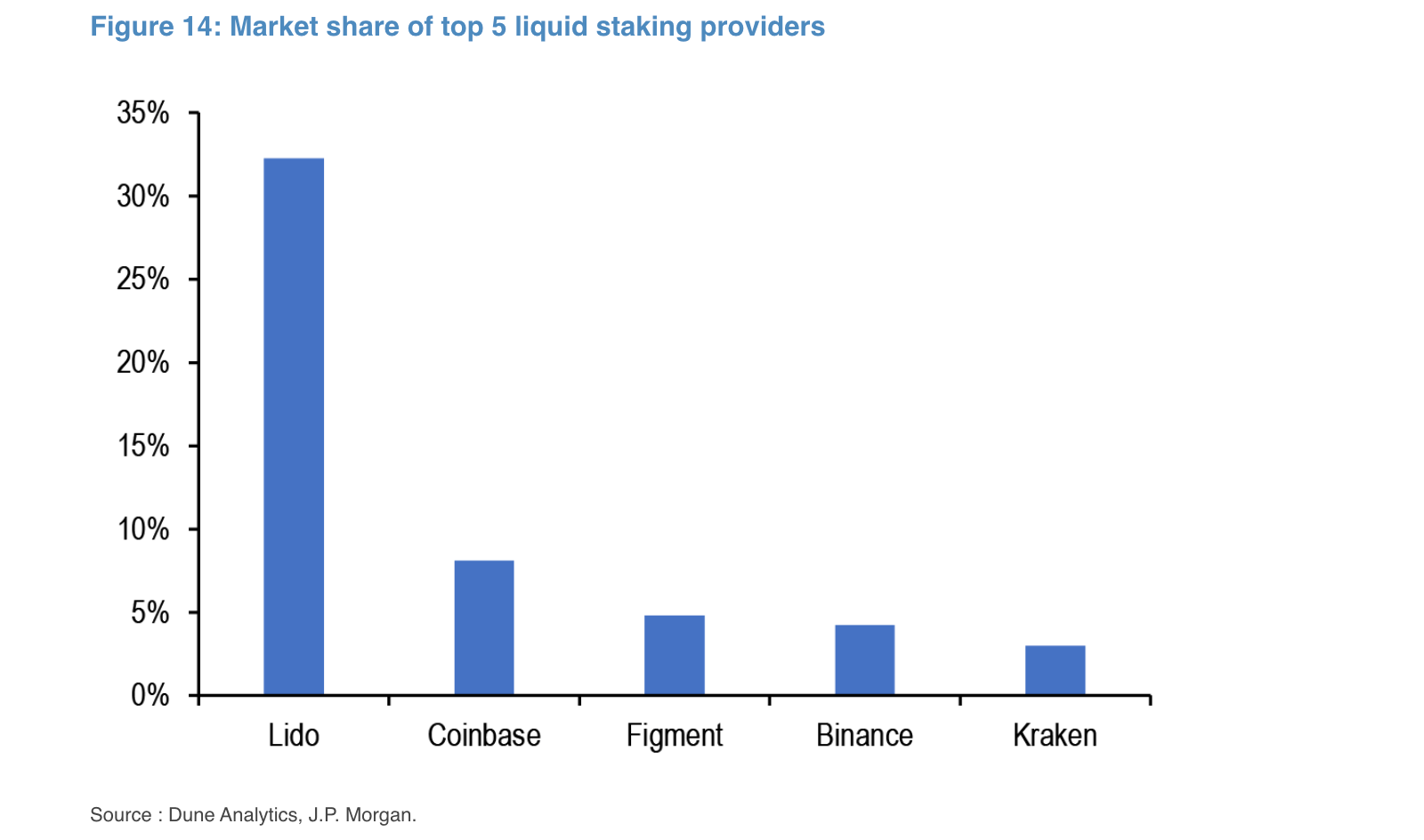Ethereum (ETH), a forerunner in the decentralized finance (DeFi) ecosystem, has seen a notable surge in its staking activities. This staking boom has raised eyebrows among experts from JPMorgan concerned over ETH’s increase in centralization and the consequences that may arise.
Ethereum, aiming to transition to a proof-of-stake consensus mechanism, opened the floodgates for staking. This meant holders could ‘stake’ or lock their tokens to support network operations like block validation. However, while this promises rewards for the stakers, JPMorgan analysts have reported that there could be ripple effects.
Ethereum Centralization Concerns Rise To The Surface
JPMorgan analysts, led by Nikolaos Panigirtzoglou, highlight the inadvertent increase in Ethereum’s network centralization, particularly post the Merge and Shanghai upgrades. The Ethereum network became “more centralized as the overall staking yield declined,” they noted.
According to the analysts, what’s leading to this centralization could be attributed to liquid staking providers. Lido, a notable player, has been pinpointed for its dominant role. The JPMorgan report noted:
The top 5 liquid staking providers control more than 50% of staking on the Ethereum network, and Lido specifically accounts for almost one-third.

The analysts further disclosed while platforms such as Lido tote their decentralized nature, the underlying reality appears different. The analysts said these platforms “involve a high degree of centralization.”
According to the analysts, the ramifications of such centralization can’t be understated. They mentioned that “a concentrated number of liquidity providers or node operators” might compromise the network’s integrity, leading to potential points of failure, attacks, or even conspiracy, resulting in an “oligopoly.”
They further highlighted that such centralized entities could censor or exploit user transactions, undermining the community’s interests.
The Rehypothecation Risk And Declining Rewards
Another dimension to the staking story is the looming threat of ‘rehypothecation.’ In simple terms, it’s the act of leveraging staked assets as collateral across various DeFi platforms. According to the JPMorgan’s analysts:
Rehypothecation could then result in a cascade of liquidations if a staked asset drops sharply in value or is hacked or slashed due to a malicious attack or a protocol error.
Furthermore, as Ethereum continues its journey on the staking path, the staking rewards seem to diminish. The report indicated a drop in total staking yield from 7.3% before the Shanghai upgrade to roughly 5.5% recently.
Regardless, Ethereum has shown a slight upward trajectory of 1.5% in the past 24 hours, with a market price currently sitting at $1,643 and a market cap of approximately $9 billion, at the time of writing.
Featured image from Unsplash, Chart from TradingView
- SEO Powered Content & PR Distribution. Get Amplified Today.
- PlatoData.Network Vertical Generative Ai. Empower Yourself. Access Here.
- PlatoAiStream. Web3 Intelligence. Knowledge Amplified. Access Here.
- PlatoESG. Carbon, CleanTech, Energy, Environment, Solar, Waste Management. Access Here.
- PlatoHealth. Biotech and Clinical Trials Intelligence. Access Here.
- Source: https://www.newsbtc.com/news/ethereum/is-ethereum-staking-boom-a-ticking-time-bomb-jpmorgan-weighs-in/



